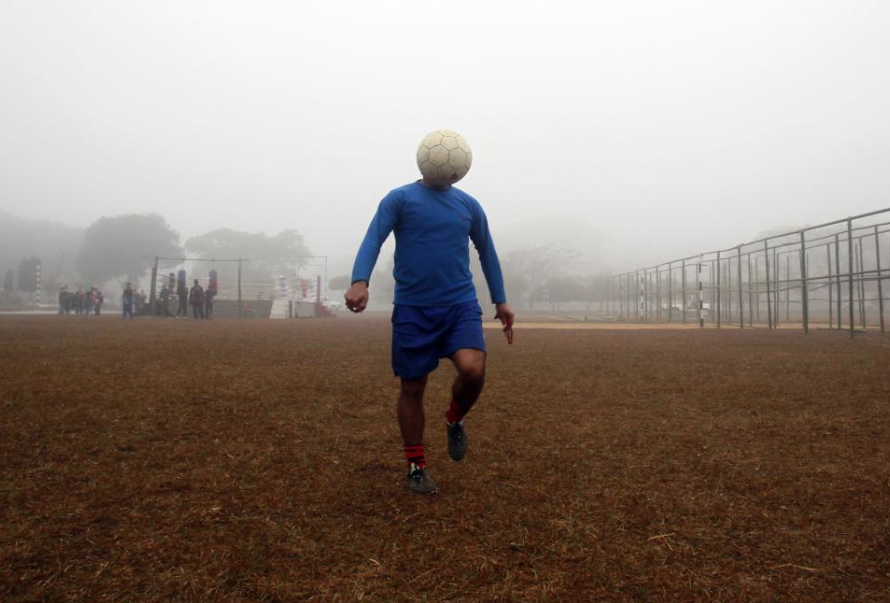One answer would be in India, as with this photo. Why you would do so may be harder to say. The visual joke has been one of the lines of demarcation between amateur photography and photojournalism. Families and friends delight in them, but the pros avoid them for obvious reasons: the basic technique and typical examples are born cliched, and the practice of documentary photography is known in part by its attitude of seriousness. When some journalists are getting killed, others know better than to goof off.
There are exceptions, however. This photo was among those labeled “Editor’s Choice” at the Reuters website. More significantly, Elliott Erwitt is a photographer of the first rank, and he always has had a fondness for the visual joke. (See how easy it would have been to say “a weakness for the visual joke”?) His gag photos–e.g., of a dog’s head in place of its master’s–are numerous. More important, they are part of a social vision that is comic in the deep sense of the term: at once objective and generous, Erwitt depicts human frailty and social artifice as they are each the common lot and saving grace of our human condition. From that perspective, visual jokes are not merely low level entertainment but also invitations to tolerate each others’ imperfections, and to find moments of accidental joy in what might otherwise be a dreary day.
In the wake of the murders of the Charlie Hebdo staff for publishing political cartoons, the question of “Where can you take a visual joke?” acquires additional significance. It also has multiple meanings. One might ask where you can create and publish such humor, and where the jokes can be taken for what they are (and not, say, blasphemy), and where you can take them to do other things (say, entertain your friends or engage in political advocacy), and where you can take them now that you have offended someone (as in the American idiom of “you can take that and shove it up your . . . “). This last sense is not trivial, even if does have a range, e.g., from merely violating professional norms to risking death at the hands of evil men.
Perhaps this context contributed to the decision at Reuters to feature a photo of a man with a soccer ball for a head. If so, the gesture can be appreciated, but there is reason enough without it to admire the photograph. The substitution of the white ball with its geometric lines for a human face conforms neatly to Scott McLeod’s theory of the identification evoked by cartoon characters, which, because they are relatively featureless, match our interior and necessarily schematic sense of self rather than our experiences of how others look. Thus, the faceless figure prompts the viewer to look at another person from a distant place as a way to see oneself. What you might see is up to you, but it does matter that you can see it, or a hint of it, in someone who is not you.
That abstract sense of the individual is reflected in the simplicity of the rest of the scene. The barren yet textured field creates the perceptual ground against which the central figure is defined. The fences surrounding the athletic field create a sense of enclosure, almost as if it were a prison yard or military base, which is matched emotionally by the morning fog. The man’s posture and hands suggest attentive focus of mind and body, just as the uniform, equipment, field, and the routine itself–keeping the ball in the air as he marches down the field–all are part of a disciplined practice. He is not joking, but he is demonstrating the intense involvement in a single activity that is the mark of play and of work at its best. Some might say that the fusion of work and play is civilization at its best, and that excessive separation of the two is a downward path. Jokes might be closer to our higher selves than we think.
The photographer was joking, just a bit, anyway, as the image involves taking delight in the obvious artifice of the camera. In a week when there isn’t much to joke about, the small moment of levity provided here might be thought of as a moment of grace. And as a reminder that life goes on, especially if you are in a place where you can take a joke.
Photograph by Jayanta Dey/Reuters.

Discussion